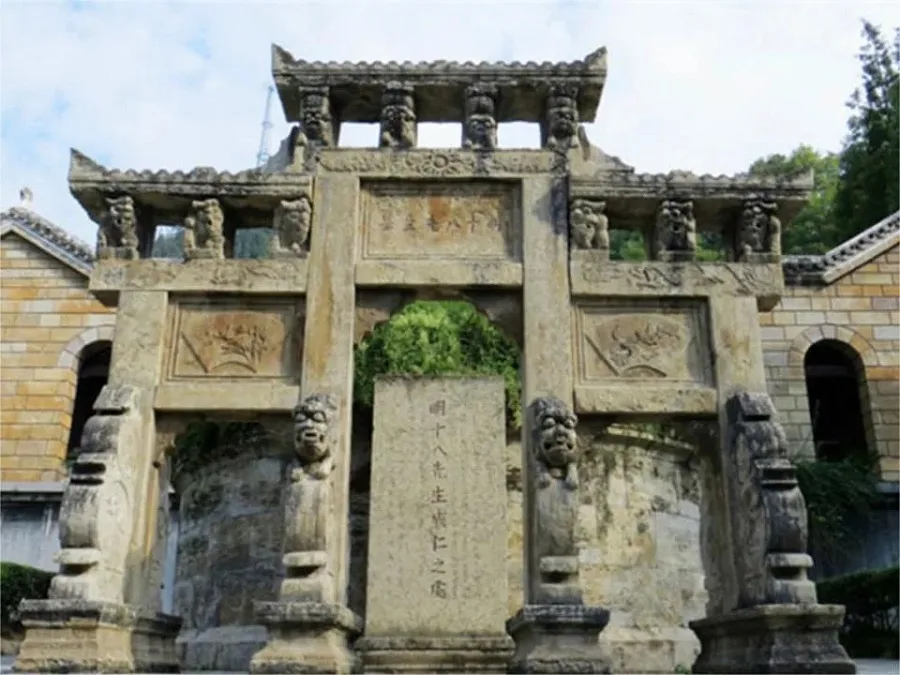Anlong Zhaodi Causeway - Bilhete, horário de funcionamento, localização e destaques


Anlong Zhaodi Causeway (安龙招堤) is situated in the northeast of Anlong County and is recognized as one of the top ten scenic spots in Guizhou Province. Originally, it was a wetland area known locally as “Beitang Haizi.” During the rainy season, the mountain torrents would overflow, causing flooding in the city area.
In 1694, to protect the city from flooding, a local militia leader named Zhao Guolin initiated the construction of a stone embankment, spanning over 80 zhang (approximately 240 meters) in length and about 8 feet wide, to connect the two sides of the wetland. This project involved significant effort, with Zhao Guolin contributing 2000 taels of silver from his own funds and personally leading craftsmen to clear the land and construct the embankment over the course of a year. Inspired by the famous “Sudi” and “Baiti” in Hangzhou, the embankment was named “Zhaodi” in commemoration of Zhao Guolin’s efforts.
In 1848, during the 28th year of the Daoguang reign of the Qing Dynasty, the prefect of Xingyi, Zhang Ying, further enhanced the embankment by raising it an additional 5 feet. He also planted willow trees along the embankment and lotus flowers in the water, transforming the once hazardous Beitang Haizi into a beautiful landscape. Today, Anlong Zhaodi boasts stunning scenery, with elegant and picturesque views, attracting numerous visitors.
Índice
Informações básicas
| Duração estimada da excursão | 2 horas |
| Preço do bilhete | 70 RMB |
| Horário de funcionamento | 8.00 - 18.00 |
| Número de telefone | 0086-0859-2213787 |
Localização e transporte
The Zhaodi Causeway is located in the northeastern part of Anlong County, Qianxinan Buyi and Miao Autonomous Prefecture, Guizhou Province, China, approximately 2 kilometers from the bus station. Visitors can reach the scenic area by walking, taking a taxi, a public bus, or driving their own vehicle.
Highlights of Anlong Zhaodi Causeway
Ten-Mile Lotus Flowers

The Ten-Mile Lotus Flowers present a breathtaking sight. Upon passing through the archway, visitors step onto the causeway, which stretches over 300 meters, with a gentle stream flowing beneath. To the south of the causeway lies a stretch of rice fields, while to the north lies a lotus pond, where crystal-clear waters reflect the vibrant hues of the lotus blossoms. Curved bridges cross the pond, leading to five pavilions where visitors can admire the lotus flowers. In the height of summer, hundreds of acres of lotus flowers bloom in various shades of red and green, creating a mesmerizing scene where pavilions and bridges appear to float amidst the sea of flowers, while the gentle breeze carries the fragrance of the blossoms.
Tombs of the Eighteen Scholars of the Southern Ming Dynasty

Located beside the Ma Chang Ba at the foot of Tianbang Mountain in the northwest corner of the county town, the Tombs of the Eighteen Scholars of the Southern Ming Dynasty commemorate the eighteen loyalists who served during the Southern Ming Yongli era and met tragic ends. Covering an area of over 4000 square meters, the site comprises the tomb area, a memorial hall, and cliff inscriptions. In front of the tomb, there are two stone archways, each adorned with intricate carvings of dragons and lions. The tomb itself, circular in shape and constructed with fine-cut blue stones, is surrounded by 18 stone steles inscribed with poems and writings from various periods. The area is solemn and dignified, with pine, cypress, and flowering trees planted throughout.
Imperial Palace Museum

The Imperial Palace Museum, also known as the Yongli Imperial Palace, is situated on Datong Road in Xin’an Town. Comprising a gatehouse, Wenhuadian (Hall of Literary Prowess), annex halls, and corner towers, the architecture is inspired by the styles of the Yongli Imperial Palace. Built during the chaotic period between the late Ming Dynasty and early Qing Dynasty, the Yongli Imperial Palace was established by Zhu Yuelang, who declared himself Emperor Yongli of the Southern Ming Dynasty. Today, the Imperial Palace Museum serves as a historical site, preserving the architectural style and cultural heritage of the Yongli era.
Paisagem de Guizhou, Atracções de Qianxinan